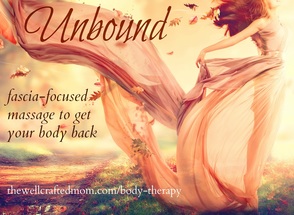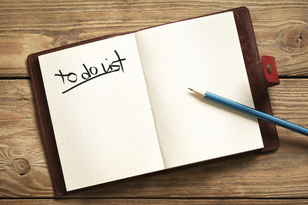 Years ago in my life coach training when my life was feeling over full and unbalanced, I was re-introduced to the PERMA model of well-being. Developed by the founder of the Positive Psychology movement, Martin Seligman, this model includes five buckets - Positive Emotions, Engagement, Relationships, Meaning, and Achievement - that comprise how we create a well-balanced life. Seligman recommends that you deliberately choose how you distribute your time and energy into the five PERMA buckets. When you feel unbalanced – when you're spending too much time in Achievement as you're meeting a goal at work, for example - you use the PERMA model to redistribute your time, energy, and attention back to what feels better. Here’s a description of each of the PERMA categories: • Positive Emotions - Making room in your life for what makes you feel good. Creating positive emotions, like contentment, peace, happiness, pleasure, joy, and excitement through what you do and by feeling optimistic. • Engagement - Having opportunities to get into what psychologist and author Mihaly Csikszentmihalyi calls flow: becoming so absorbed in an activity that you lose sense of time. • Relationships - Spending time and committing to relationships that sustain and fulfill you. • Meaning - Creating opportunities that matter to you. Focusing your attention on matters that are greater than yourself. • Accomplishment - Working on activities and projects that give you a sense of achievement. Setting and achieving goals. Everyone is different with how they distribute their “units of happiness" into the five buckets. If you have a strong drive to succeed at work, you might have more happy points in the Achievement bucket. Or maybe you find joy in helping others in your community, so when you allocate more time toward activities that bring Meaning in your life, you feel happier. I had originally learned about the flow state in college classes but hadn’t realized its importance to my happiness until I lost the time to be engaged in flow, and then found it again. The awareness of how I felt without flow compared to my happiness while in flow changed how I managed my time, and what activities I filled my time with. Making the PERMA Model Work For You Here’s an exercise so you can do to see how this works. • Download this handout of the PERMA buckets. • Now, count out 20 small items – like pennies, M&Ms, Cheerios, goldfish crackers … These items will be your “units of happiness.” • Think about a time in your life when your life felt balanced, when you felt happy. • As you think about that time, imagine how many units of happiness were going into each of the PERMA buckets. Distribute your 20 small items into the five different categories. • Make a note of your PERMA well-balanced score on the lines under the PERMA circles. • Move your units of happiness out of the way and think about your life as it is right now. How do you allocate your 20 bits of happiness? Where are you putting your most time and your most energy regularly? • Write your current PERMA score underneath your well-balanced score. What’s different? Maybe there’s a disparity between your Meaning scores. If your best balanced time came when you were volunteering each week for a cause you felt passionate about, you might feel happier now by adding more meaning into your life. What tiny, beautiful thing can you do to create more purpose in your life right now? You might see a big difference between your Positive Emotions scores. Perhaps there aren’t many options right now to create positive emotions; you’re too busy or too overwhelmed. Rick Hanson, psychologist and author of Hardwiring Happiness, says that recalling positive experiences from the past has the same positive benefit on the brain as creating new ones. Take 30 seconds once or twice a day to re-experience a positive memory, diving deep into your recollection of the event to make it vivid in your mind, allowing the positive emotions warm you up from the inside out. For me, creating more well-being in my life right now means finding time for more Engagement. Preparing the craft project for my upcoming coaching + crafts moms group helped raise my happiness quite a bit and I'm marking off time in my calendar for more creative endeavors. I'm delighted with the linked test tube vases I made. They turned out a lot like how I see my happiness and well-being: wonderfully imperfect and a bit wobbly, needing my attention to make sure they're balanced just right. Big hugs! Kathleen The Well-Crafted Mom's gathering for mothers this month is focused on finding, losing, and returning to balance again and again. The mini-retreats are made up of small groups of lovely moms who come together for conversation, compassion, and creativity. To save your spot in the Wednesday evening or Saturday mini-retreat, register here.
1 Comment
 If anyone had told me last year that I’d break up with Chardonnay in 2016, I would have probably laughed. Chardonnay and I had a great relationship. She soothed me when I felt frazzled. She supported me after a long day of work when dinner preparation, homework overseeing, and more work awaited me. She encouraged me in social situations when I felt awkward or dull. Perhaps I leaned on Chardonnay more than I probably should but … didn’t lots of moms? I certainly didn’t have a problem. I got everything done (and more!) than I needed to. I had stopped drinking many times in the past. It wasn’t like I needed Chardonnay. I just liked her. Very, very much. But something felt off in my relationship with Chardonnay, especially as I grew older and my hormones changed. My sleep patterns had fallen apart years before and even though I didn’t sleep any better during the nights when I drank wine in the evening and the nights when I didn’t, I wondered if my sleep would get better if I stopped drinking altogether. The amount of white wine that I drank increased, too. Only one glass became two, and sometimes even three, over the course of an evening. A few years ago, I had to let go of my friendships with Pinot Noir, Cabernet, and Merlot because of the headaches that would invariably come later in the evening after spending time in their company. But I really didn’t miss my red friends. Chardonnay was there for me. Last summer, a life coach who had a podcast I often listened to while out for my weekend walks started a program to help people stop over-drinking. Her program appealed to me because I didn’t want to stop drinking forever and ever; I wanted to be in charge of how much Chardonnay I had in my life, rather than feeling like it was the other way around. I learned a lot in the program, like how alcohol stimulates the dopamine response in your brain, so that you get a powerful reward when you drink, increasing the likelihood that your brain will want more. I learned that if your brain has a choice between what you think is best and what you crave, the cravings will always win – unless you have a compelling reason why you’re not drinking (or not drinking more than you want) and a plan to manage how much alcohol you’re consuming. I followed the coach’s steps and immediately cut down on how much Chardonnay I was consuming and then cut back even more a few weeks later. I developed a drinking protocol and a plan to follow, which meant I decided what and how much I would drink 24 hours in advance. The program was working, but I was exhausted. I was thinking about drinking even more often than before. In late October, I decided that Chardonnay and I were no longer in step and I broke up with her completely. Drinking Chardonnay had always felt like turning on my favorite Pandora station to help make the unpleasantness of my life less unpleasant. Like listening to a soundtrack that livened up my predicable routine, bolstered my discomfort, and soothed my anxiety. Drinking alcohol was like following the beat of the bass drum in the band. I didn’t notice how much something outside of me had determined the rhythm of my life until it was gone. In the quiet, what I heard, after I stopped drinking and that rhythm stopped, was this: You can't do this without Chardonnay. THIS could be anything, like getting through a noisy nighttime routine with the family after a long day of work; attending a social event with people I don't know well (or do); sitting through an excruciatingly boring obligation; or going out with girlfriends when I felt tired, depressed, and dull without Chardonnay to liven things/me up. You can't do this without Chardonnay. On the one hand (the one without a wine glass in it), I knew this statement wasn't true. I have accomplished so much without a drink in my hand or alcohol in my bloodstream – early motherhood with both of my kids, for example. Alcohol barely made an appearance while I was trying to get pregnant, was pregnant, while breastfeeding and then going through the process again with my second son. My second child nursed until he self-weaned at 20 months old, so there were years that I didn't drink. But the voice was persuasive. With Chardonnay, I could do pretty much anything. I didn’t have to wonder if I could do this without alcohol because – after 5:00 p.m. on most nights when I wasn't working – I didn’t have to. Once I broke up with Chardonnay, the voice became determined and loud. I heard You can’t do this without Chardonnay when the election didn’t go the way that I hoped and I started worrying about what potential changes to the Affordable Care Act would do to the availability of health insurance for my family. When the other adults around the Thanksgiving table were drinking and getting merrier by the minute and I sat there, feeling stupid and dull. When an indoor snowball fight was launched at the dinner table on Christmas Eve and my sober self brought the vulnerable glassware to the sink and blew out the lit candles on the table instead of joining in. When it was time to take down the Christmas decorations, because it felt like a big, boring project and I really wanted to be doing something, anything else. When it was time to celebrate the New Year with friends at our traditional dinner on New Year’s Day and sparkling cider didn’t feel celebratory enough. I didn’t fight the voice. That was one thing I learned in the stop over-drinking program is that the more you argue with the urges, the stronger they get. Instead, when I heard the familiar rhythm of the desire to drink, I chose not to dance along. Instead, I sat still, asking myself in the kindest voice possible, the one I reserve for clients, friends, and children: What’s going on, sweetie? Why do you want to drink right now? The answers were varied: I’m bored, I’m nervous, I’m tired, I’m hungry, I’m worried, I’m overwhelmed, I’m uncomfortable … Instead of blotting out the feelings, I let them be. Interestingly enough, the discomfort didn’t get bigger. It stayed a while, happy to be listened to, and then it left. Last week, I counted how many weeks it’s been since Chardonnay and I have been together and it’s been nearly 11 weeks now. I wish I could say that my sleep is amazing and wonderful and deep and restorative. It’s not and that’s not really a surprise. What’s different for me is even better than sleep (which is a surprise because what’s better than sleep?) – I’ve learned that I’m stronger than I thought. Every time I choose to not listen to the voice that tells me I need Chardonnay to go to a party, spend time with people, get through a rough patch, or help me to feel better about my life, I grow stronger. I made it through all of the stress and social functions during the holidays without any wine. I welcomed in the New Year with sparkling grape juice shared with my family. I did hard, boring, uncomfortable things – and plan to do many more in the year to come – without Chardonnay by my side. I’m learning to like the sober me, the one who listens, marches, and sometimes dances to the rhythm of my own music. This is the soundtrack I choose to play. Happy New Year to you all. Big hugs, Kathleen P.S. Sometimes, someone else's perspective, ideas, and support is just what we need to get to a new place where we feel stronger and happier. Let me know if I can create that support for you.  A friend of mine asked me last week if I was ready for the holidays. Ready? I haven't even started. Have you? It's October and I already feel like I'm behind schedule. On Sunday, Bill and the boys put up the Halloween decorations – with only a bit more than one week to spare. We then headed off to the Halloween super store late in the day, picked up a few things for the boys’ costumes and then hit the Goodwill for inspiration and other supplies. Creating unique costumes with my boys is a fun project but I’ve got a deadline of Friday evening for the oldest boy’s outfit since he wants it finished before his martial arts school’s Halloween party that night. Creating my sons' costumes is just one deadline among many: promoting the Signs of a Happy Baby book for its launch in bookstores in May; working with my coaching and body therapy clients; shifting the name of my business completely from Touch Blue Sky to The Well-Crafted Mom before my business tax certificate expires (which so far has involved talking to the City and County of San Mateo, the California Massage Therapy Council, and the San Mateo Police Department and the project is still not done); and for some reason I decided that now would be a good time to paint my home office so I’m sitting in my office this morning in the dark, illuminated only by the light of my computer screen since all the light fixtures are unplugged and the furniture is pushed to the center waiting for the painter to come this afternoon. And then, every year, the holidays add a big pile of more onto an already full plate. When I think about what’s coming in the next few months, I’ve considered having a full-blown meltdown, toddler style. But last week, a light bulb went off: What if I started acting like a toddler? Like how my boys behaved when they were three-and-a-half and life just handed them too much to handle? WWMTD? (What would my toddler do?) With WWMTD in mind, I created a happier holiday guide with four life lessons from toddlers. The life lessons spell out GASP because I’d like to encourage you all (and repeatedly remind myself) to come up for air and take a deep, delightful breath during the holiday season. Here are the steps for making the holidays happier (for you and everyone else): • Get help. I have a dear, smart friend who I call "Kristy with a K" (because I also have another dear, smart friend named "Christy with a C”) who listened to me whine/share about my to do list and offered to help. Kristy has this magical way of organizing everything that I have to do and she helped me to prioritize my tasks in a way that made my to do list much more manageable. (It's all about Sharpies and sticky notes, folks.) Yesterday, she returned to work alongside me at the dining room table. She edited documents for the online media kit (is there anything this girl can’t do?) while I worked on the new Happy Baby Signs website. A few years ago, I wouldn’t have accepted Kristy’s offer to help. I would have found a way to politely decline, explaining that I was too busy. In reality, I would have been too embarrassed to admit that I needed help. I still struggle with accepting help and even more with reaching out and asking for it. The chorus of voices in my head loudly insist that I should have my schedule figured out, I should know how to organize my time, I coach people how to do this, for goodness sake! The negative thought that I should have everything all figured out doesn't serve me. I have another self-defeating thought that my successes don't count unless I do everything by myself. But this thought is dead wrong. Instead, these thoughts keep me stuck and prevent me from learning anything new. I’m discovering that graciously receiving help – instead of shoving it away – gets easier each time I do it. My goal for the holidays is to get lots of practice with asking and accepting help. • Ask why. Before you say yes to another commitment, whether it’s helping out at the holiday fair or attending the Christmas party at your office, ask why like a toddler. Why do you want to go? Why do you want to spend time doing this thing instead of doing something else? Why are you feeling obligated? Why can’t you just stay home? Asking why is particularly important around family obligations that may not fit with your new lifestyle as a parent. Your traditional plan to leave your in-laws’ home first thing on Christmas morning to get to your parents’ home three hours away in time for lunch may have been fine when you and your spouse were child-free. But now, with a toddler and baby in tow, the time in the car plus the overstimulation of the holiday plus the lack of naps might end up creating the most dismal of days. Hot Tip: The question, “Why are we doing this?” is much better asked ahead of time and not midway through the three-hour drive/six-hour plane ride/formal family dinner at a fancy restaurant with children who have already melted down and are past the point of redemption. • Say no. Saying no is hard. We don’t want to disappoint other people, especially close family and friends. However, as author Brené Brown reminds us, “Momentary discomfort is better than long-term resentment.” Toddlers know how to say no quite well. This holiday season, channel your inner toddler and say no. Repeatedly. “No, I don’t want to take on another commitment right now.” “No, thank you. We’re busy that night.” “No, we’ve decided to stay home on Christmas Eve and start a new holiday tradition with the kids.” No. Nope. Nada. Make room for yourself and your family to enjoy the holidays by saying no – as best as you can – to what doesn’t delight and excite you. • Play first. How much fun do you allow yourself to have during the holidays? Do you tell yourself that you’ll get on the floor and play with your kids AFTER the dishes, AFTER you put the load of clothes in the washing machine, AFTER the house is all spic-and-span? How much are you missing by relegating your fun to AFTER? I teach my clients tips and tools on how to masterfully delegate and ditch tasks so that they have the time to play. Start by letting go of what doesn't feed your soul or feed your family, whether it's a clean-enough-for-company house (I quote Dr. Seuss and tell myself that the people who mind don't matter and the people who matter don't mind) or perfectly wrapped presents (go for gift bags!) Let what feels like fun guide you through the holiday season. Can your introverted self find a moment with some spiced cider to sit and warm your toes in front of the fire while your hubby puts the kids to bed – and warm up a cup for him as he joins you once they're asleep? Can you find a carefree afternoon or evening to window shop with your very best girlfriend? Are there enough leaves in your backyard to make a big pile to play in with your toddler – and then bring a handful of the most colorful leaves inside so you both can get messy gluing them onto construction paper to decorate the house? Experts say that children are our best teachers. Take a deep breath and let your inner toddler show you the way to happier holidays. Big hugs, Kathleen Want more help? Are you feeling overwhelmed already? Wondering how you’re going to say “No, thank you” to what you really, really don’t want to do? Need some new tools in your tool belt to get you through the next few months? Let me help you through the holidays with one-on-one support to give you support, ideas, and resources to deal with the obstacles that your life, job, extended family, spouse, and kids throw your way – so you can have the best and happiest holiday season ever. Sign up for your personal support here. Or get ideas and support at my November groups for moms on Saturday, November 12th and Wednesday, November 16th. Save your spot at thewellcraftedmom.com/mini-retreats.  Recently, I was wearing one of my favorite sweaters, a long, asymmetrical one that’s just the right weight for a summer day where I live, where it doesn’t get too hot usually until Indian Summer comes. I was wearing a pendant necklace and the mounting of the stone kept getting stuck in my sweater. I should have taken off the necklace after the first time it snagged, but didn’t because it was a only a minor annoyance. But the necklace stuck in the sweater one time too many, pulled on a thread, and then the weave bunched up unevenly all across one sleeve. The snag in the sweater reminded me of myself: bunched up, puckered, uneven. Arthritis in my low back, neck, and hands had limited what I believed I could do without pain. Massage work was okay as long as I didn’t see too many clients. Running for too long irritated an old injury in my hips and sometimes triggered plantar fasciitis. Dancing felt good as long as I didn’t push myself too hard. And how I looked? I was okay with my appearance as long as I didn’t have to wear shorts or a swimsuit, ever. My life was organized around my limitations. Sure, I was unhappy that I couldn't do everything I wanted to do or feel as comfortable in my skin as I wanted to feel. But maybe this is what my life was supposed to be like now that I’m in my 50s. Over the years, I’ve spent a lot of time looking for solutions to feel better about my body, whether it was to resolve physical problems or ease the mental ones. Most recently, I turned to solutions to change my thinking, like Geneen Roth’s book Women, Food and God and the Brave Girls Club’s Body Restoration online class. Once I became a life coach, I coached myself on my body image the same way that I coach my clients on their issues: by tugging gently on one thread, one pattern of thinking, to allow a too-tight sweater of thoughts and feelings to ease, allowing room for more positive, truthful, and productive ideas. How I feel about my body is where I've kept getting stuck, an issue I've returned to again and again. A few months ago, when I tugged on the threads of how I felt about my body, something shifted: I realized that to feel better in my body, I need to be better in my body. When I looked at solutions from this new perspective, I became fascinated with fascia and a new bodywork tool called the FasciaBlaster by fasciologist Ashley Black. This new body therapy tool allows me to work on myself and my clients to change familiar, but unhealthy, patterns to ease pain and discomfort and create more emotional comfort, as well. What is Fascia? Fascia is a three-dimensional web of collagen-based fibers that cover the entire body, from head to toe, from deep within the body to just under the surface of the skin. Fascia protects and supports muscles, organs, and nerves; allows muscles to work independently of one another; lubricates collagen and elastin fibers; and absorbs impact, like when you’re running in the park or jumping alongside your toddler in the jumpy house. Experts say that if every part of the body was removed except for your fascia, your body would still hold its same shape. Whenever a person is injured (from a car accident or a fall, for example), or overuses a muscle (like a hair stylist who overuses her hands), or experiences a physically stressful event (like childbirth), this webbing – the fascia – is injured, too. For example, when you sprain your ankle, you injure the ligaments and also the fascia in that area. The sprained ligament heals but the micro tears in the fascia from this injury create an inner protective cast of adhesions and restrictions that doesn't always go away. Instead, the fascia can become more and more restricted over time, constricting blood flow, nerve function, and flexibility. Tight fascia can even create the appearance of cellulite as the fat on the body is pushed through the restricted webbing of bound fascia. When I started looking into fascia, I was intrigued by how fascia-based bodywork reminds me of the life coaching work I do with clients and myself. People get snagged and stuck by thoughts that maintain old – and often unhealthy – patterns of behavior. When a coaching client can loosen her attachment to her thoughts, she can then create lasting change. Tugging a little bit on a thought that a client might believe, like, "I'm not good enough," or "Parenting isn't supposed to be this hard; I must be doing something wrong,” can release a whole lot of pain that the client has been holding on to. Small but significant shifts in thinking are life-changing. With the body, the damaged threads are tight fascia that can keep a client stuck in old patterns of posture and movement. When I work with body therapy clients, I look for places where there’s a snag, where the threads don’t come together smoothly, and then loosen the restrictions, allowing clients to experience more freedom. Becoming Unbound As I’ve been working on my clients (and myself) with the FasciaBlaster, I'm constantly reminded of how I repaired my snagged sweater – by carefully smoothing the damaged threads. With this new body therapy tool, I’m making profound changes in how I move through my thoughts and in my body and I’m helping clients to do the same, like releasing restrictions in a client’s neck to ease migraines; working on the ankles and lower legs of another client to stop recurring plantar fasciitis; and smoothing adhesions in the fascia in a client’s hip flexors, legs, and ankles to change postural patterns that have created lower back pain. Within each session, whether I’m working with a client doing bodywork or providing life coaching, my client and I are working together to re-weave her life's fabric, finding the snags and repairing the threads to bring the beautifully intricate tapestry back to its original beauty. Would you like to become unbound? I work with clients to help them create lasting changes through life coaching sessions and body therapy work. To schedule a body therapy session, follow this link to my online scheduler (and take advantage of my half-off special offer for first-time FasciaBlasting sessions by using coupon code NEW50 – book your appointment for September or October before the offer expires on September 23rd!) Interested in finding out if life coaching with me is for you? To schedule a complimentary, no obligation phone consultation, please go here.  I had walked out the front door, closing it firmly behind me. I could hear my toddler on the other side of the door crying. He was in good hands: our part-time nanny was there; I could hear her lilting Irish accent over the sobbing of my son. My husband was home, too, working away at his computer upstairs, so if my son truly melted down, Bill was there to save the day. I was leaving for work, which I had done many times before. I had scheduled massage therapy clients for the rest of the afternoon and into the evening, typical for a weekday. So why did I feel so guilty leaving? And why did I feel even more guilty about looking forward to going to work where I’d be around adults who used their words and who didn't demand every bit of patience and energy I possessed? When I left my son for something fun for me, like a solo walk without him or to meet up with a girlfriend for a rare coffee date without kids in tow, the guilt I felt was even worse. It felt like a never-ending equation I was trying to balance. Giving to myself meant taking away from my child. There was only so much time and energy available. There was only so much me. But that me was miserable. It was a never-ending loop: I wanted to feel happier so I added “self-care” activities into my schedule that took me away from my son (and later both of my boys ) but I then felt guilty about the time away from my child which made me feel miserable which made me want to spend more time taking care of myself to feel happier which meant taking time away from my child... I wasn't sure what to do about the imbalance that was sending me into tailspins. But I knew I had to do something. Back then, when my now teenaged son was just a toddler, I came across the work of Ellen Galinsky, author of the book, Ask the Children. In her research, Galinsky spoke with more than 1,000 children, ages eight to 18, about how they viewed their parents’ balancing act between family time and work. Galinsky found that the majority of children interviewed believed they were spending enough time with their parents. (It didn’t matter whether the mom stayed at home or worked outside the home.) Children in the study didn’t wish for their parents to work less. Instead, a large percentage of children in Galinsky’s study wished for their parents to be less tired and less stressed by work – so that the time that was spent with children was quality time. In Galinsky’s studies, more didn’t equate with better. “I asked kids what they were going to remember most from this period in their life, and I asked parents to guess what the kids would say,” said Galinsky in a Frontline interview. “And parents almost always guess the big event, the vacation, the wonderful family reunion, you know, the five-star kind of family thing. And kids talked about the very small, everyday rituals and traditions that say to them ‘We're a family.’” After reading Galinsky’s work, I wish I could say that I had an ah ha moment and the guilt vanished. It didn’t. I still calculated the equation of the time away from my children and the time spent with them. I still evaluated the quality of our interactions – did I seem enthusiastic when we were rolling Thomas and Edward around the train track again? However, I became more aware of being truly present when I was present. I noticed that when I added the activities I enjoyed into my schedule (with and without my sons), I was happier and more patient. And, per the laws of Algebra, when I added happiness into my side of the equation, it had to be added to the other side, too, which generated more happiness all around. Although the mom guilt didn’t disappear, it softened. Less judgment, more acceptance, more love. Author and lifestyle guru Danielle La Porte describes guilt as “the price of admission to fulfillment.” Guilt is the price for doing anything that you desire: everything you say yes to means you’ll have to say no to something else. Your time/energy/happiness equation isn’t going to balance all the time. Sometimes work or other activities will get more of you. Sometimes your children will. Balancing the equation is like homework: an ongoing assignment, different problems every day. As Danielle La Porte observes: “Guilt and joy are not part of the same equation.” Which one do you want to work with? Join me and a little more than a handful of other moms at this month's mini-retreat. We'll be talking about guilt and ways to ease out of its stranglehold on your happiness. For more information and to register (space is limited to six moms per mini-retreat), go here.  There are so many things to bicker about on a family camping trip: from loading up the borrowed truck to finding the best place to set up the tent; from my driving (and his directions) to how to divvy up the blankets when the temperature at night dropped to an unpredicted low (and my son was wearing my fleece jacket since he forgot his own). Bill and I couldn’t agree on anything. It was painful – and a big clue that there was something bigger going on with me. Bill and I have been working more closely together over the last six months. Recently, we scheduled a free call to jumpstart a new venture we’ve been considering – leading workshops for couples. This first free call (which was supposed to be last week and was rescheduled to July 21st) is called “What to do When You Don’t Agree,” interestingly enough. On the camping trip, I woke up early Saturday morning, quietly climbed out of the tent, but then couldn’t get the camp stove to work. Frustrated (because I really wanted a warm chai tea after shivering all night), I grabbed my backpack, warm hat, and gloves and took a walk down to the lake. It was a beautiful morning. The lake was still. The geese along the shore reminded me of my favorite Mary Oliver poem Wild Geese: … you only have to let the soft animal of your body love what it loves. I would love to be the person who could work with her spouse, collaborating closely on a day-in-day-out basis. I’m not. I’ve discovered that I don’t compartmentalize well. I can’t separate the driving-me-nuts co-preneur from the love-you-to-the-moon-and-back husband. When Bill and I bicker, we’re not fighting about whether the entrance to the tent should be facing the trees or facing the neighbor’s campsite, who let the yellowjacket in, or whether there’s enough ice to last the weekend or if he should get more. We’re fighting because there’s too much left unsaid. So I said it: I told Bill yesterday that I don’t love working with him. I can help, advise, edit, share insights and information. I can support, approve, and make suggestions. But collaborating on creating content for a new venture – especially when he’s so busy with his other responsibilities – is too much to ask of our marriage. “Failure is only the opportunity to more intelligently begin again,” said Henry Ford. So I’m beginning again. I’ll be hosting the free call on Thursday – solo – to talk about what Bill and I have learned about what to do when we disagree, sharing advice and insights, not only from all of our successes, but from our failures, too. I hope you can join me. Thursday, July 21st, 1:30 p.m. (Pacific) Register here Hugs! Kathleen  Ever since kids came, has your marriage been unrecognizable? Maybe you and your spouse bicker all the time, sometimes about big things, like your finances or decisions about the kids' future. A lot of the time, though, it feels like the same argument over and over again:
Before you got married – and even in the early days of your marriage – you heard people say that marriage is hard. You didn't realize that it was going to be THIS hard. So you do one of three things to make it easier. 1. You make decisions and take care of matters without involving your partner. It's just better this way. The less you talk, the less likely it is that you'll fight. You know if you have a conversation about finding a new nanny, whether or not to change pediatricians, or the fact that your daughter bit another girl at preschool, you and your spouse will get into another argument. It's just better to handle it by yourself. But you notice how far you and your partner are drifting apart. 2. You do it your spouse's way, letting him decide the best financial planner to meet with, the best car to buy, whether your kids go to private or public school. It’s far easier to cave than to fight. But you notice how resentful you feel. This can't be good. 3. You resign yourself to the fact that this is how it's going to be, telling yourself, "It is what it is." You don’t fight with your spouse but you don’t feel connected either. You become more and more unhappy, asking "Is this really all there is?” What if doing hard things with your partner created closeness? What if making tough decisions despite your differences brought you together? What if your challenges felt just as good as the easy and enjoyable moments? My husband, Bill, and I just finished writing a book together and we learned a lot about how a hard project can either pull the threads of your relationship apart or mend and strengthen the rips and tears, drawing you even closer. We’re holding a free call for our community to share our very best tips for how to do hard things with the person you love. Whether the challenge in your relationship is as big as writing a book or as small as deciding who makes school lunches, we want to help. In the call, we’ll explore how you can develop plans and strategies to use the challenges in your relationship to bring you closer together. To sign up for the free call go to Kathleen's website here: http://www.thewellcraftedmom.com/free-call.html  Your children have been playing nicely for a few minutes, giving you the chance to get a head start on dinner. Maybe tonight you’ll be able to make something other than pasta, thrown together at the last minute. But then, the kids’ voices get angry and loud, with shouts of “That’s mine!” And you think: Here we go again. Can’t they get along for more than two minutes? Why can’t the older one just be nice? Before you can get to the kids’ bedroom, you hear the little one wailing and you know her big sister has done it again. You rush in, angry, and yell at your oldest child for hurting her sister – and then feel like crap when you see the look of fear in your oldest child’s eyes and she starts crying as loudly as her sister. Two minutes later, you’re sitting on the bedroom floor, a big mess of self-flagellation, resentment, and frustration, while your kids giggle as they peek around your body at each other. You’re mad at yourself for breaking your promise to not yell at the kids. You’re exhausted from the kids’ constant bickering and fighting. You know you must be scarring them in some way with the anger and resentment you can’t keep from bubbling over. But really, if they just behaved better, you’d be a better mom. Your kids are turning you into a lousy mom. You don’t have to stay here on the floor, tearing apart your parenting. Here’s how to pick yourself up, dust yourself off, and start all over again. Taking Care of We Your ability to control your reactions is governed by the part of your brain called the prefrontal cortex. Your prefrontal cortex is like having a CFO who collects all of the data and makes executive decisions on how to manage your behavior and your choices. When you lose your cool because your kids are misbehaving, screaming bloody murder, and trying to take each other down, it’s like you’ve set up shop in the basement, otherwise known as the fight or flight part of your brain. To get back upstairs into the CFO’s office (your prefrontal cortex), you need to find a way to feel empathetic toward your child. To build empathy, see if you can you look at the situation from your child’s perspective. Usually when a child acts out, the bad behavior is expressing a need: • Has your child started a new preschool with new rules and a new routine and he needs more help adjusting? • Are changes surrounding the addition of a new baby changing how much attention you can give to your older child and your daughter needs more time and reassurance from you? • Are you working more hours lately and your child is missing you? Getting promoted to the CFO’s office by shifting your perspective, being empathetic, and managing your temper is an awesome goal. But when your child launches into another tantrum at Target or leaves teeth marks in his brother’s arm, and you feel those mean mommy emotions starting to boil, what do you do? How can you keep your patience when everything – including you – feels like it’s falling apart? Taking Care of Me It’s scientific fact: the better you take care of yourself, the more self control you have available. Eating well, getting good sleep, and other healthy habits affect how you use glucose, fuel for your brain and body. Physical activity – not just what we commonly define as “exercise” – makes your brain bigger and faster, especially in the prefrontal cortex. You can build willpower with STEAM Power: S for Sleep, T for Talk Nicely, E for Eat Well, A for Activity, and M for Mindfulness. When you integrate new habits that help your prefrontal cortex work more effectively, you can more easily manage your moods, stop yelling, develop patience, and feel like a better mom overall. Are you thinking that all of these ideas are great but you’re wondering how in the holy hell am I supposed to do all that? Or have you tried to let go of resentment, yelling, or another bad habit in the past and your new ideas have worked for a while but then you’ve fallen back into your old, familiar patterns? If you think more information is nice but you know you need more hands on help, schedule a free mini session with me to get you back on track. I’ll work with you one-on-one to share tools you can start implementing right away to ease resentment and frustration with your spouse and kids, let go of guilt that can get especially loud when you start thinking about yourself, or help you figure out comes next for you so your time is filled with what matters most. From my perspective of a mom of older kids, the adage the days are long but the years go fast is gospel truth. What do you want your kids to remember? How much more time do you have to fix what isn’t working? If patience feels so far out of reach it feels like you’re stranded on the basement floor, it’s time to try something different. You don’t need to spend all that time climbing 44 flights of stairs to get to your inner executive offices. Let’s go find the elevator.
Kathleen Ann Harper is the author of The Well-Crafted Mom. She works with moms who know they have everything they ever wanted, yet still feel like there’s something big missing. Through one-on-one sessions, group programs, and retreats, Kathleen helps moms find the time and energy to craft a life that includes creativity and joy. Discover more about Kathleen at thewellcraftedmom.com/about  September feels like a mini-January to me. I love how the new school year is a fresh start for everybody: new notepads and pencils for the kids, new classrooms and schedules, and new resolutions for me to be better organized and prepared for each day. Maybe it’s the same for you. You drop the kids off at preschool and daycare and you're ready for action. You have the whole morning mapped out: expedited errands, a workout, and an organized effort to finally get the house in shape. But then life gets in the way. One of your children gets sick and you can't work out. You start off with a lot of energy to tackle the household mess but, after a week, it doesn't seem like you're making any progress, get discouraged, and stop. This is a pattern for many people: starting off with big goals and big enthusiasm, but after a few weeks in, they're back in the same habits as before. Not following the new calendar app, not organizing the flood of papers that come from school, not going to the gym, going for a walk, or attending the classes they signed up to take. Why is it so hard to build a new habit – and so easy to stay stuck in an old one? Research shows that our brains are wired for falling back into old habits, much like a wheel finding a well-worn groove in the road. It’s not impossible to build new habits, it takes awareness and effort – a few resources that might be hard to find if you’re a mom without a lot of extra resources to spare. Here are a few tips to make it easier: Find your resistance If you’re trying to build a new habit and getting stuck, find your resistance. What are the stories you’re telling yourself for not doing what you originally were so motivated to do? It’s too hard. I’m too tired. I should be doing (insert something else that sounds a lot more important here). Over the summer, I was motivated to get up early and head outside for a morning walk before the rest of my family woke up. Lately though, I’ve been more likely to roll over in bed than head outside. When I took a look at my resistance, I realized I don't want to go outside because it’s now dark at my walk time when it wasn't over the summer. Now that I'm aware of this piece of information, I can work on creating a solution. (Stayed tuned.) Unharness your inner power Use the power of visualization – not by imagining the end result but by picturing yourself doing the small steps along the way. A study from UCLA showed that students were more successful on tests if they imagined themselves developing and following good study habits, rather than if they pictured receiving a good grade at the end of the semester. So if your goal is to have a well-organized home, you’ll want to imagine yourself accomplishing the steps involved in getting to what you desire. Picture yourself spending 15 minutes every day working on one part of your home, or putting the paperwork away to keep your home neat, not the final “reveal,” which may be months and months away. Change what doesn’t work Many people try to solve an old problem using the same methods they’ve tried before. Sometimes what you need is more than another appointment book, membership at the gym, or yet another resolution. What you might need are new ideas, new tools, or someone to keep you accountable and motivated so you can keep moving toward your goal. You might need some new tools and stronger resources if … • Your house is full of half-finished projects because you find yourself giving up on your goals only a few weeks after setting them, • You lose motivation for exercise shortly after starting a new program, • You sacrifice the time you set aside to do creative projects and instead fill your time with what’s required and feels more important, • When you stop working toward a goal, it makes you feel bad about yourself, even if it’s just a little. Let me help. I offer a free call to help you create new ideas for making your goals a reality, not another reason for feeling like you’ve failed. To start the conversation, send me an email. I'd love to hear from you. Kathleen Ann Harper is the author of The Well-Crafted Mom and a certified life coach for moms. She works with moms who know they have everything they ever wanted, yet still feel like there’s something big missing. Through one-on-one sessions, group programs, and retreats, Kathleen helps moms find the time and energy to craft a life that includes creativity and joy. You can purchase The Well-Crafted Mom on Amazon by clicking here.  Writing a book is a lot like being pregnant. The process is very personal and internal. There’s a lot that happens that feels like a delightful secret: the baby hiccups, moves, kicks you to say hello when you rest your hand on your belly. It’s the same way with a book. While in the writing stage, I’d read back over what I wrote – chapters no one else had seen – and have that same, delicious, private pleasure because something special was growing within me. At the same time, growing a baby – whether it’s a real baby or a book or a personal project – is something that’s rarely done completely alone. You have guidance, support, resources, a wealth of information at your fingertips, friends and family to lean on, a support system of experts, like doctors and nurse practitioners (or, in my case as an author, a publisher, editor, art director…) And just like I learned so much about myself in the months before giving birth to my children and then once I became a mom, I’ve learned just as much as I became an author. The biggest lesson I’ve learned is to lean. I’ve never been good about leaning on friends and family or admitting I’m not able to handle everything myself. I believed that there’s more value in going it alone. I like the feeling of barreling through challenges like they’re my own obstacle course and I’m racing to see how much I can get done, as if I’m out to set a personal record. Doing it alone carries weight, builds status, pushes you harder to achieve more. But it also creates exhaustion, reduces focus, and isn’t fun. And the idea that having an inner Mean Manager who drives you to work hard and then work harder so you can get further faster isn’t necessarily true. Sociologist Kristin Neff’s research on self-compassion shows just the opposite: the more self-compassionate you are, the more productive you are, and the happier you are at large. And just like when you’re newly pregnant and can’t imagine ever fitting into the enormous maternity clothes that your friends have passed your way, I couldn’t imagine how much I’d grow. Over the summer, I made it my personal goal to say yes whenever I could to requests for help. I’ve reached out to ask for help from my writer’s support group, even (or especially) when I felt vulnerable. Friends have taken care of my children and taken care of me by shopping for me, reading chapters and giving honest feedback, sitting down with me and my scattered to do list and helping me prioritize and organize what to do first, even providing free acupuncture sessions to help me ease out of my head and back into my body. Friends listened to my writing woes and then gently told me to shut up, sit down, and get back to work. Just like research has shown that having an exercise partner increases your motivation – and also your performance – having friends, colleagues, and family in my corner increased my resolve to finish, even when writer’s block stopped me in my tracks, even when I experienced my longest bout with insomnia ever, even when I thought I couldn’t add one more task onto my already full plate. Friends – including my so very patient and devoted husband – would bring little gifts: a smoothie while I wrote, a bag of berries left on my front porch, a grown-up coloring book to help me relax, a homemade meal for my family when I was out of town with a note that said, “Thank you for sharing your wife with the world.” I leaned, and there was a strong wall of so many people who held me. “Some people go to priests; others to poetry; I to my friends,” wrote Virginia Woolf. To my friends: Thank you. |
Archives
April 2023
Kathleen
I'm a mother of two incredible boys, wife to Bill White of Happy Baby Signs, author of the books The Well-Crafted Mom and Signs of a Happy Baby, and an intuitive life coach. I like to blog about my adventures with my family and the life lessons I'm learning along the way. I hope you'll join me on this journey. CategoriesCheck out our past newsletters by clicking the link below.
|
 RSS Feed
RSS Feed